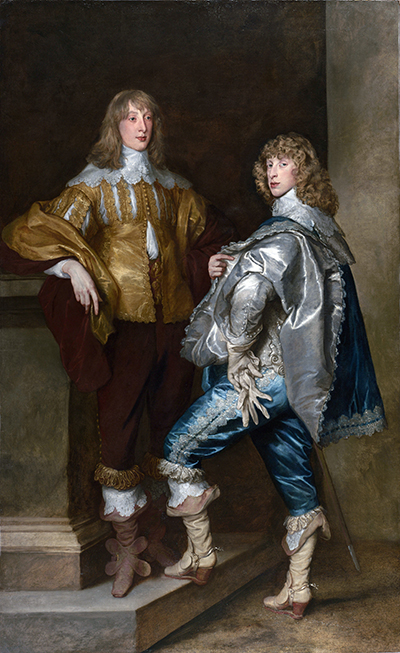This vibrant double portrait captures two young men just prior to their three year tour of the European continent
The subjects found here are Lord John Stuart and Lord Bernard Stuart, with the painting being completed in around 1638. Sadly the two would perish in the English Civil War which occurred just a few years later. They fought on the side of the Royalists.
These brothers were the youngest sons of the third Duke of Lennox and would enjoy a truly priviledged life aside from their military service. They had been encouraged to travel across Europe by King Charles I who was an advocate of culture and travel. He may have been responsible for commissioning this artwork too, having worked closely with Anthony van Dyck on many occasions.
This artist would see portraiture as more than simply art. It was a means by which to document history visually. He felt honoured to be requested to paint portraits of high ranking individuals whose reputations would be impacted by his output. Essentially he had the power to shape future minds through his work and he took this very seriously. In this particular portrait we see two young men with greater enthusiasm and less responsibility, a truly exciting time in their lives.
This portrait also helps us to understand this side of the English Civil War, with the beautiful attire, long hair and boyish charm. Such a scene would have been contrasted to the horrors of war in which they would soon be involved. At this time in art history, military paintings would often concentrate on themes of strength and glory with little interest in the realities of battle.
Cavalier Royalists, as these two individuals were, have been depicted within art in a sentimental manner. The original painting can be found in the National Gallery in London, UK. This venue also holds significant paintings from the career of Peter Paul Rubens too.




